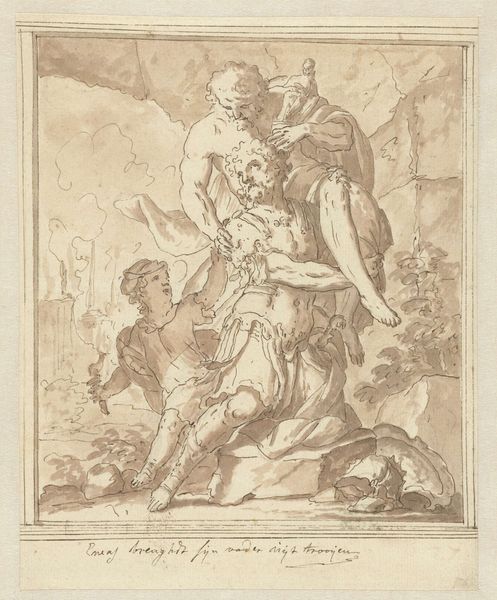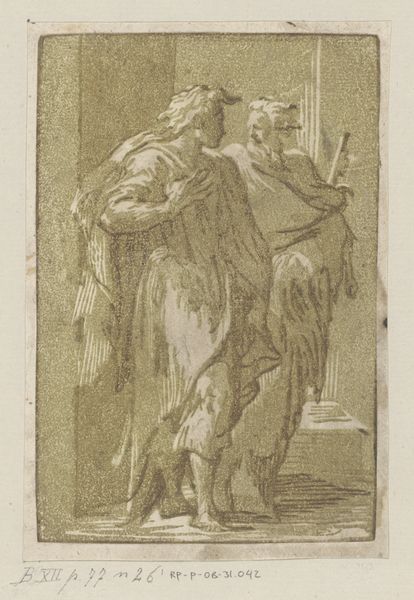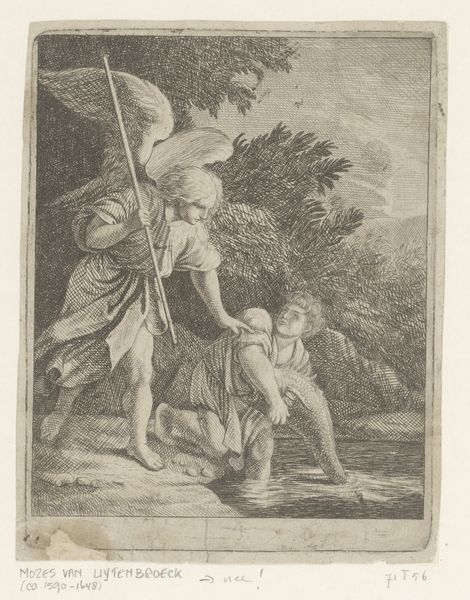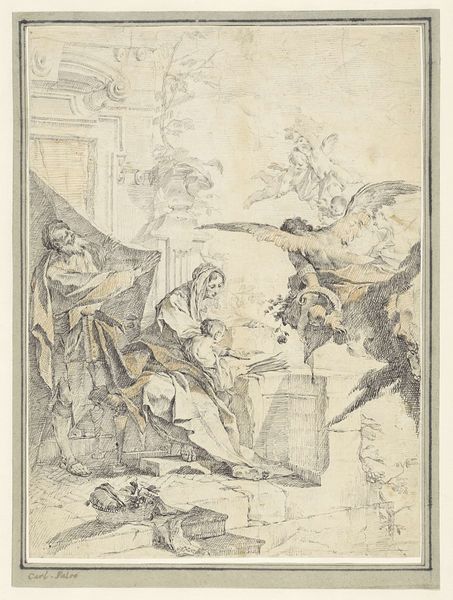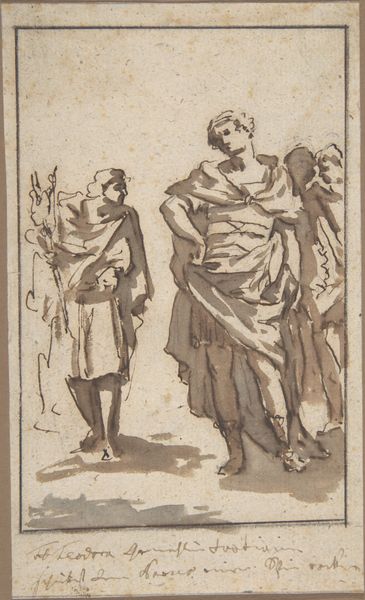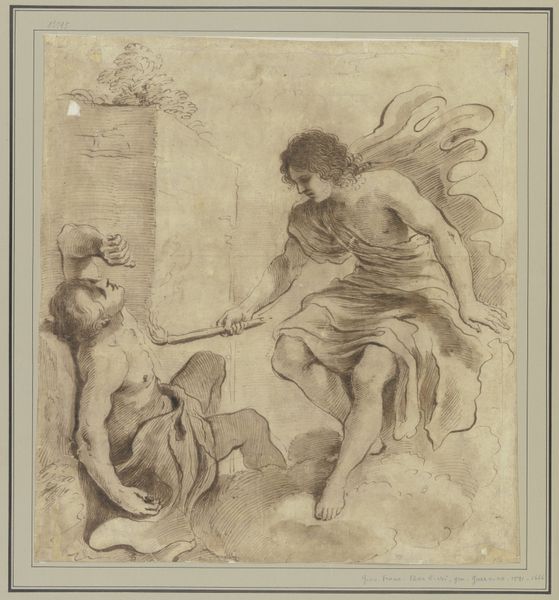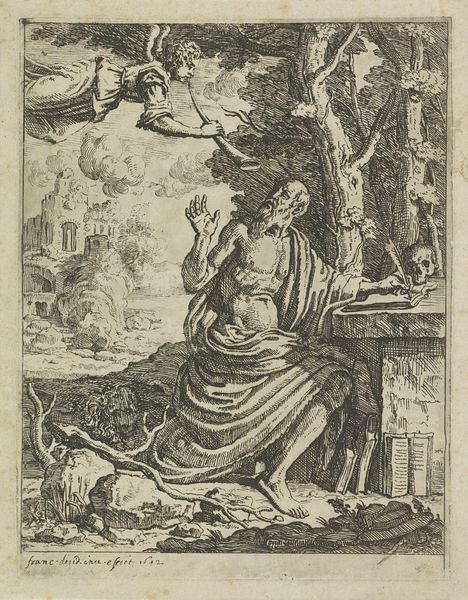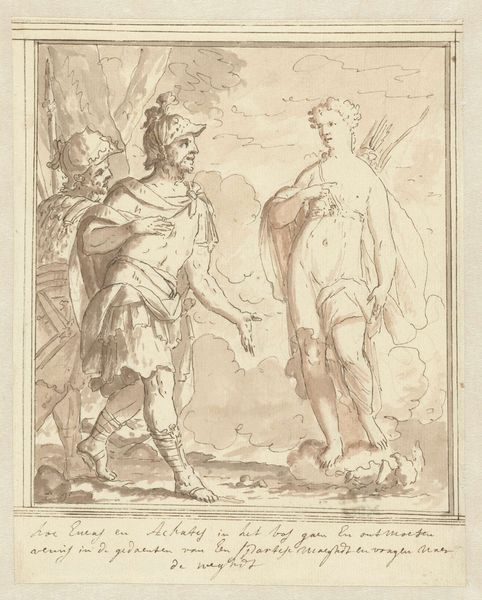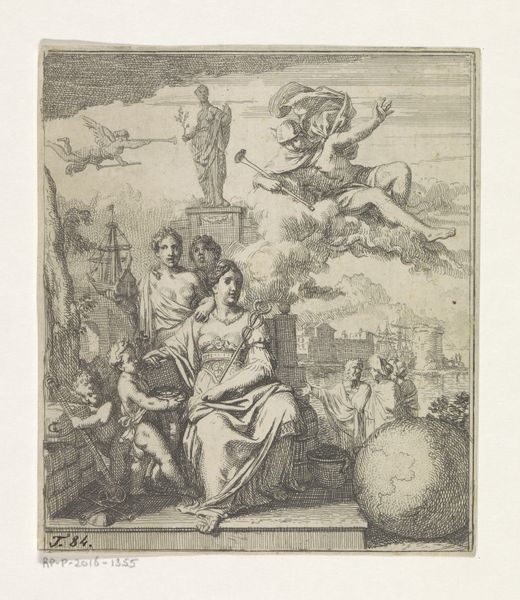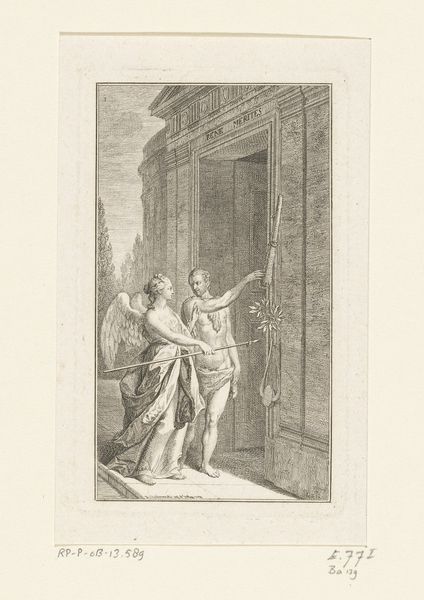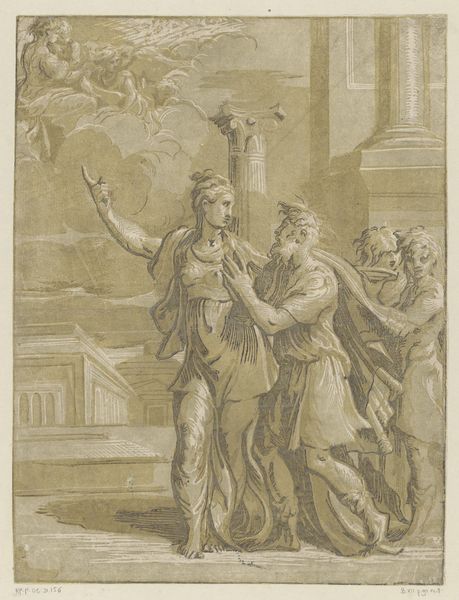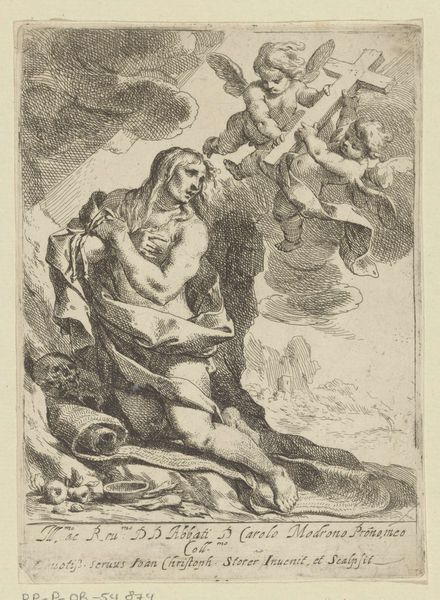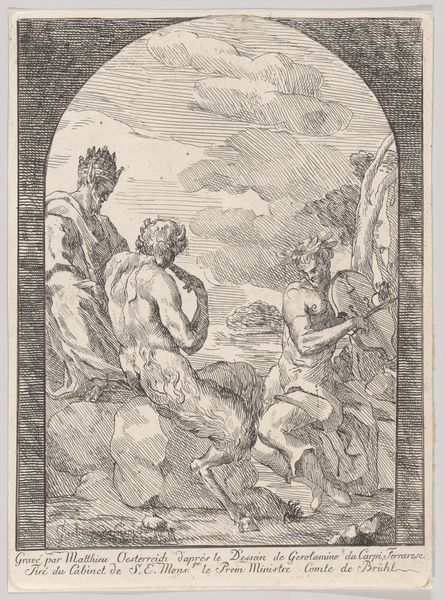
drawing, paper, ink, pencil
#
drawing
#
aged paper
#
toned paper
#
light pencil work
#
baroque
#
pencil sketch
#
sketch book
#
landscape
#
figuration
#
paper
#
personal sketchbook
#
ink
#
pencil
#
sketchbook drawing
#
pencil work
#
history-painting
#
storyboard and sketchbook work
#
sketchbook art
Dimensions: height 185 mm, width 150 mm
Copyright: Rijks Museum: Open Domain
Editor: So, this is "Mercurius beveelt Aeneas te vertrekken," a drawing in ink and pencil by Mattheus Terwesten, dating from around 1700 to 1704. It has a fluid, preparatory feel to it. What jumps out to you when you look at it? Curator: For me, it's about understanding the means of its creation. We’re seeing the direct marks of the artist, the layering of pencil and ink on paper, and can understand a deliberate engagement with materiality. It prompts questions about Terwesten's studio practice. Was this a study for something larger? Editor: That’s a great point. The way it's rendered feels so immediate and like a sketch. How does its historical context as a Baroque drawing made with "humble materials" such as pencil and ink affect your interpretation of its possible status? Curator: Precisely! We tend to celebrate the "finished" oil painting, a luxury item designed to project wealth and status, especially in Baroque art. But here, we see a glimpse of labor. Terwesten wrestled with ideas, form, and composition directly. We can analyze it in the light of a modern sketchbook practice. Do we really see this art differently if it has not been intended as “high art”? Editor: Interesting, so the act of creation itself becomes more apparent, more immediate, almost subversive if compared to art being a luxury product and statement only. Curator: Exactly. How does valuing process and materials alter the traditional hierarchy of art? By elevating the labor, the raw ingredients, are we democratizing art appreciation itself? And is it relevant what class or culture the consumer of that kind of sketchbook-artwork belonged to? Editor: It definitely gives me a lot to consider about what truly defines “art”. Curator: And how our perspective on materiality shapes those definitions! It makes you think about art-making and reception quite differently.
Comments
No comments
Be the first to comment and join the conversation on the ultimate creative platform.
